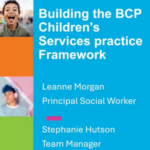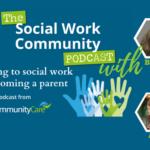
It is “impossible” to meaningfully assess the effectiveness of child in need (CIN) plans because of their lack of clear measures of success.
That was the warning from Children’s Commissioner for England Rachel de Souza in a report that called for tighter national guidance on CIN plans and support to improve consistency and their impact for families.
The commissioner found CIN plans lacked high-quality actions, including because of the absence of timeframes and specific measures against which to measure improvements for families.
Case records also often did not record whether actions had been completed when CIN plans were closed.
Social workers interviewed for the study also reported that families were staying too long on CIN plans because of the lack of early help provision to refer them on to.
On the back of the findings, De Souza called for tighter requirements and guidance on CIN provision, including national thresholds for accessing support and a national child in need plan outcomes framework.
The child in need statutory framework
Under section 17 of the Children Act 1989, English councils are under a general duty to provide services for children in need – defined as those who are disabled, who are unlikely to achieve or maintain a reasonable level of health or development, or whose health and development is likely to be significantly or further impaired without the provision of services – to safeguard and promote their welfare.
When, following a section 17 assessment, a council decides to provide services to a particular child, it should develop a multi-agency CIN plan, according to the Working Together to Safeguard Children statutory guidance.
According to Working Together, the plan should set out which organisations will provide services to the family and “set clear measurable outcomes for the child and expectations for the parents”.
Huge variations in council practice
The commissioner’s study was a follow-up to a report earlier this year that found significant variations between councils in the proportions of children in need on CIN plans, the number of plans per head of population, their duration and the frequency of social worker visits to families.
This was underlined by the latest Department for Education children in need census, published this week, which showed that the rate of CIN plans per 10,000 children ranged from 37.4 to 243.9 between councils with published figures.
The national average was 86.2, with about 105,000 children on a plan as of March 2024.
De Souza’s latest report was focused on the content and purpose of CIN plans.
Her office examined 77 CIN plans from eight local authorities, identifying 626 actions, which it assessed on whether these were actionable, measurable and had a responsible owner, a defined measure of success and specific timeframe.
Lack of ‘high-quality’ actions
Just 15.3% of actions met all five criteria required to be classed as high-quality by the commissioner’s office. While most were actionable and measurable and had a responsible owner, just 28% had a timeframe and 48% a defined measure of success.
This is despite Working Together to Safeguard Children, which councils must follow other than in exceptional circumstances, stating that CIN plans should “set clear measurable outcomes for the child and expectations for the parents”.
Plans also had a “large number of inaccuracies and inconsistencies in the recording of key details such as information on parents’ names and ethnicities”, found the report.
“This may reflect the high caseloads of social workers, lack of oversight in the production of documents, or other factors, but will make these documents harder to use, and could be confusing or upsetting for children or families to read,” it added.
Plans ‘often more about co-ordinating professionals’
Social workers and parents interviewed for the study said CIN plans often did not reflect the work being done to support the family.
The commissioner’s office was told that plans often felt more targeted towards co-ordinating professionals rather than providing the family with guidance on what support was in place.
Some parents told the team that they did not receive a copy of the CIN plan, while others said that plans were unclearly written and difficult to understand.
The report said this meant that “neither the social worker nor the family will be able to confidently say the plan’s objectives have been met, nor effectively use it to document individual’s commitments to or accountability for the work as part of the intervention”.
Question marks over plan closures
The study also raised concerns about the reasoning for plans being closed, with just 35% of closure documents stating that all the plan’s objectives and actions had been completed.
In over a quarter of cases (29%), there was no update on whether actions had been completed, while 34% stated that some had been achieved and 3% that none was completed.
Social workers interviewed for the report suggested that decisions to close plans were not based on actions being completed but more subjective factors, such as the families; wishes or whether practitioners believed families could continue with the work required.
In just over half of cases, the family was closed to the local authority entirely, while in 35% of cases they were stepped down to universal services.
Lack of early help provision
However, practitioners interviewed by the commissioner’s office said they struggled to refer families to early help because of a lack of such provision.
In some cases, this led to CIN plans continuing beyond the point of necessity, despite the stigma families can feel when accessing section 17 support.
Several studies in recent years – notably the 2022 final report of the Independent Review of Children’s Social Care – have highlighted cuts to early help as a key factor in the growth of the care population and in the number of child protection enquiries.
Testing the family help model
This analysis was accepted by the last government in its 2023 Stable Homes, Built on Love strategy, leading to the testing of a new approach – family help – in 10 areas, through the so-called families first for children pathfinder.
This is designed to ensure families receive early, non-stigmatising support to resolve their problems and do not have to change worker when their needs move between targeted early help and child in need, through the merger of these services.
The Labour government is continuing with the pathfinder. Though it has not confirmed funding for it beyond March 2025, it has allocated £250m to testing children’s social care reform in 2025-26, meaning the pathfinder may be extended for another year.
The government is also due to publish its Children’s Wellbeing Bill – setting out its wider plans for reforming children’s social care – over the coming months.
Children’s Wellbeing Bill ‘a pivotal opportunity’
In her report, de Souza said the bill was a “pivotal opportunity” to improve the provision of early help and CIN support, including by placing councils under a duty to provide universal early help, backed by the necessary funding.
Her other recommendations for government included:
- Setting “clearly defined national thresholds” for families to access support through a CIN plan.
- Producing guidance on expectations for how often children receive help and how frequently that help is reviewed when on a CIN plan.
- Developing a national child in need outcomes framework setting out a core set of measures that address family need and a national measure for understanding the effectiveness of CIN plans.




 Bournemouth, Christchurch and Poole
Bournemouth, Christchurch and Poole  Hampshire County Council
Hampshire County Council  Oxfordshire County Council
Oxfordshire County Council  South Gloucestershire Council
South Gloucestershire Council  Wokingham Borough Council
Wokingham Borough Council  Webinar: building a practice framework with the influence of practitioner voice
Webinar: building a practice framework with the influence of practitioner voice  ‘They don’t have to retell their story’: building long-lasting relationships with children and young people
‘They don’t have to retell their story’: building long-lasting relationships with children and young people  Podcast: returning to social work after becoming a first-time parent
Podcast: returning to social work after becoming a first-time parent  How managers are inspiring social workers to progress in their careers
How managers are inspiring social workers to progress in their careers  Workforce Insights – showcasing a selection of the sector’s top recruiters
Workforce Insights – showcasing a selection of the sector’s top recruiters 

 Facebook
Facebook X
X LinkedIn
LinkedIn Instagram
Instagram
It is true in Social Work that if you stand still long enough things come around again and again. I qualified in 1995 and have seen several themes come and go. Family support, CIN etc. My view is that the quality, focus and outcomes associated with any intervention or assessment (that is in itself an intervention) is dependent upon the approach taken by the SW and multidisciplinary team, which is dependent upon the attitude, training, support, supervision and appropriate challenge to them as professionals. Forms, assessment frameworks, models etc need relationship based practice to underpin them all. A true sense of transparency and partnership with children, families and support networks are absolutely essential.
Do my child enjoy benefit if I have no recourse to government fund on my BRP and my child is CIN
Absolutely shambles and disgusting level of care provided in child in need cases in a local authority I know. The so called Acts which are followed and the time frame allowed for cases is more important then the child.
The frequency of change in social care personnel is shockingly high so follow up work is disrupted and child frequently forgotten and left to deal with abuse or lack of minimum care by themselves and then the case is closed because of time allowed.
I believe this highlights that social work should be a centralised agency not controlled by local authority budgets and resources. It is easy to bash social workers when they are trying to support children and family’s with little or no resources due to incompetent LAs who reduce children’s services budgets year on year.
77 plans were reviewed across 8 LA’s. As of March 2024 there were 105,000 children with a child in need plan. This means that 0.073 % of all of those plans were reviewed. I’m not sure how this can be extrapolated to be a reflective sample of the quality of child in need plans as a whole. One of my bug bears is seeing a plan which says ‘ongoing’ in the timescale but again, that’s just my experience of where practice could be improved and isn’t representative of child in need plan practice in general. Rather than tinkering with more guidance, greater investment in the number of social workers would be welcome to improve capacity and I’m sure we would then see a concurrent improvement in things like quality and measurability of plans and the information within them.
What about legislation around early help assessments and plans? There is no statutory legislation or guidance around these, yet we are expected to write them to the same standard as CIN plans, without social worker oversight or management. Since introducing Early Help following the initial Working Together to Safeguard Children policy, EH has been expected to effectively replace social care thresholds. Often driven by capacity and staff shortages within social care teams.
Hi Everyone,
Thanks for your comments on this post.
Just to say we’re not able to connect people with the Children’s Commissioner, nor is it possible to do so through this forum, but you can contact her office here:
https://www.childrenscommissioner.gov.uk/about-us/contact/
Many thanks,
Mithran